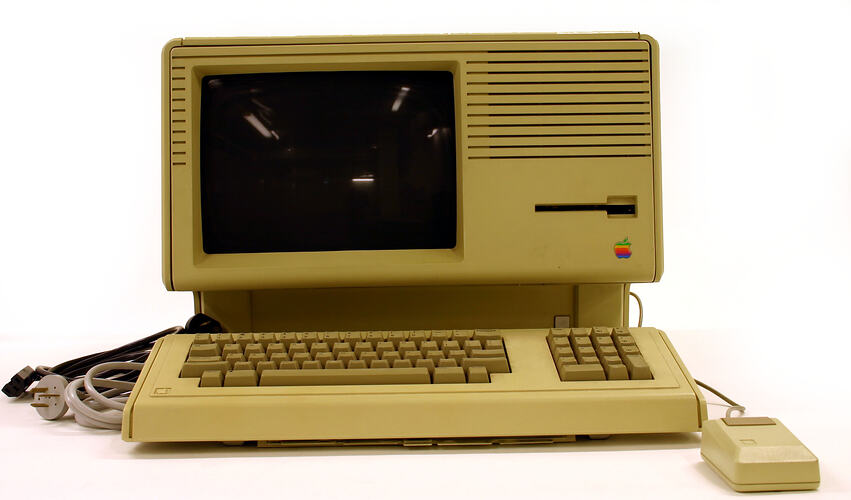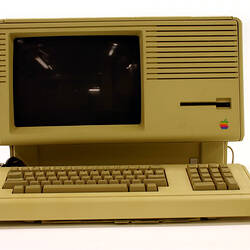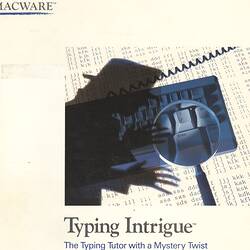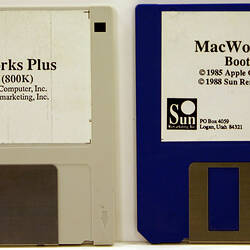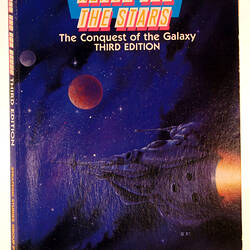Summary
Lisa 2 computer system comprising an inbuilt monitor, keyboard, mouse, circuit board and electrical cords. Accompanying software includes MacWorks and Typing Intrigue on 3½" floppy disks. Typing Intrigue is an early example of software designed to improve typing skills. MacWorks is a so-called 'Boot Disk' that is required to install the operating system into the RAM (active memory).
This particular computer was rescued by the donor when the appointed receiver of the store he was working for ordered it to be dumped in the rubbish tip.
This modified Lisa 2 computer was released in January 1985. The first model in the Lisa series was released in January 1983 and the series was discontinued in April 1986.
The Lisa was the first commercial computer to have an operating system (Lisa OS) that used a graphical user interface (GUI) originally developed by Xerox, but enhanced by Apple. The graphical interface, which became almost universal by the early 1990s, was based on the use of Windows, Icons, Menus and Pointing Device, and dubbed WIMP. The pointing device was the mouse, which enabled easy access to all points on the screen. The ability of the mouse and keyboard to control the GUI lead to the development of graphics programs and the ability to create and manipulate images.
The screen was a paper-like white display that showed exactly what would be printed (WYSIWYG or What You See Is What You Get). Other computers of the time showed green characters on a black screen in a mono-spaced typeface with complex codes indicating formatting.
These major innovations were long lasting. They gave birth to a whole new approach to computing. In essence, the Lisa and the Macintosh were Apple's attempt to make computing a simple, user-friendly activity allowing its users to exploit their creativity in profound and hitherto prohibitively expensive means, previously requiring high end professional equipment.
Despite the universal adoption of the graphical interface as an industry standard, it was criticised by proponents of rival command line interfaces, until they bowed to public demand and produced graphical user interfaces of their own.
Three Lisa models were released, the Lisa, the Lisa 2 and its Mac ROM-enabled sibling the Macintosh XL. This particular model of the Lisa is a Lisa 2 modified to a Macintosh XL using a kit purchased separately. (The last Lisa model was actually called a Macintosh XL.) The Lisa was not a commercial success. Its high cost (AUD$10,000) and the incompatibility of Apple II software with the Lisa OS were two factors that mitigated against success.
Apple stated officially that the name, Lisa, was an acronym for Local Integrated Software Architecture. Since Steve Jobs' first daughter (born in 1978) was named Lisa, it is sometimes inferred that the name also had a personal association, and perhaps that the acronym was invented later to fit the name.
A donor of an item to the Apple Collection, who worked in the Queensland Department of Primary Industries, had some first-hand experience with the first model of the Lisa. He says that it was the second Lisa in Queensland! It had two Twiggy floppy disk drives and a 5MB hard disk. A Twiggy disk drive used a type of floppy disk that preceded the 3½ inch floppy disk. He says that the Lisa itself was not very fast and it took over 5 hours to load the original Lisa system and programs from what seemed to him like a million Twiggy floppies. The Apple II proved to be a better machine for the task in mind.
The Twiggy disk drive is said to have been named after the British fashion model of the 1960s; the disk drives were also thin.
Part of a representative collection of hardware, software, trade literature and promotional material that documents the history of the Apple company, and its contribution to, and impact on the computer industry and society.
Physical Description
Personal computer system comprising main console or 'box' and various peripherals. This particular machine has been modified by the addition of a hard drive and replacement of the 400k floppy drive with an 800k floppy drive. 1. Console with built-in monitor 2. Keyboard 3. Mouse 4. Memory Circuit Board 5. Power Cords 6. Software Floppy Disks 7. Software Manual & Disk
Significance
The Lisa was the first computer to use a graphical user interface (GUI), which was controlled by a mouse and keyboard. The GUI replaced the method by which commands were inserted using command lines as in the DOS operating system.
This combination has been dubbed [WIMP] Windows, Icons, Menus, and Pointing device (mouse). This system has become the de facto standard for contemporary computing. The Lisa paved the way for the computer for which Apple is most famous - the Macintosh.
The first model of the Lisa was released in 1983.
More Information
-
Collection Names
The Apple Company Collection, Internet Macintosh User Group (iMug) Collection
-
Collecting Areas
-
Acquisition Information
Donation from Mr Darrin Southern, 22 Nov 2006
-
Manufacturer
Apple Computer Inc, Cupertino, California, United States of America, 1985
-
Past Owner (Probable)
PO Box 87, Emerald, Greater Melbourne, Victoria, Australia, 2006
-
Inscriptions
A coloured Apple Macintosh logo on the front below floppy disk slot and a smaller coloured embossed logo in the centre back below vents.
-
Brand Names
-
Classification
-
Category
-
Discipline
-
Type of item
-
Keywords
Computers, Computing, Making History - Apple Computer Collection, Innovation & Design
